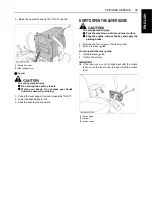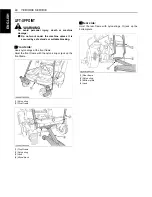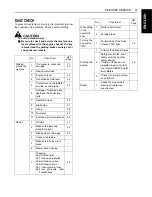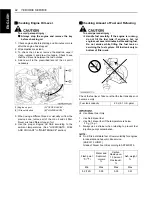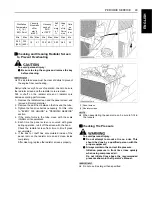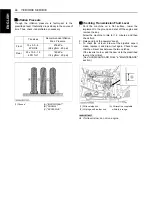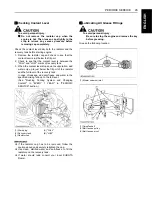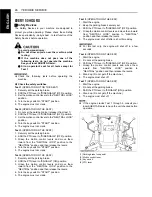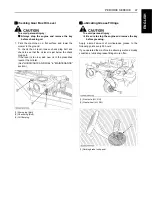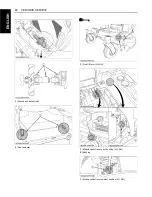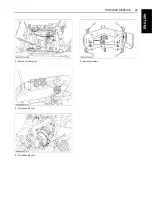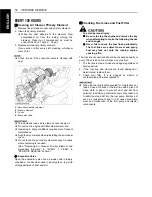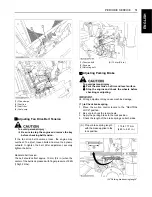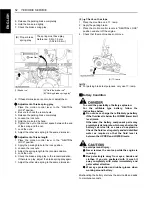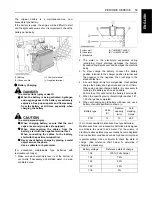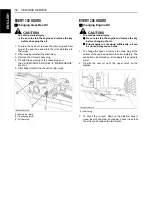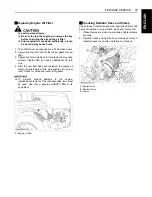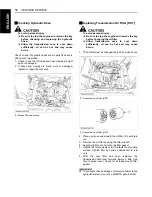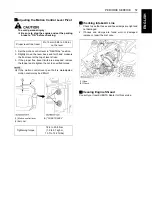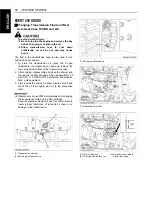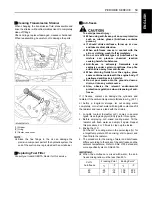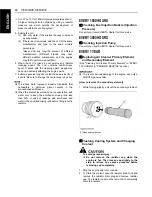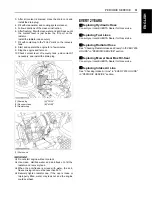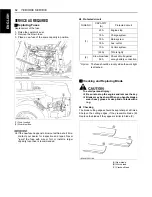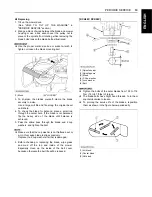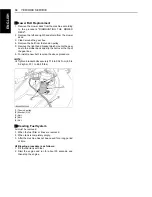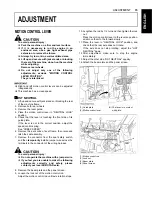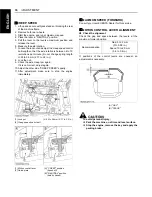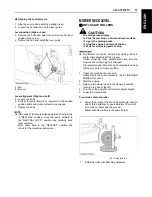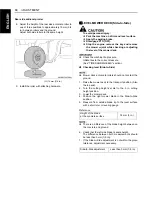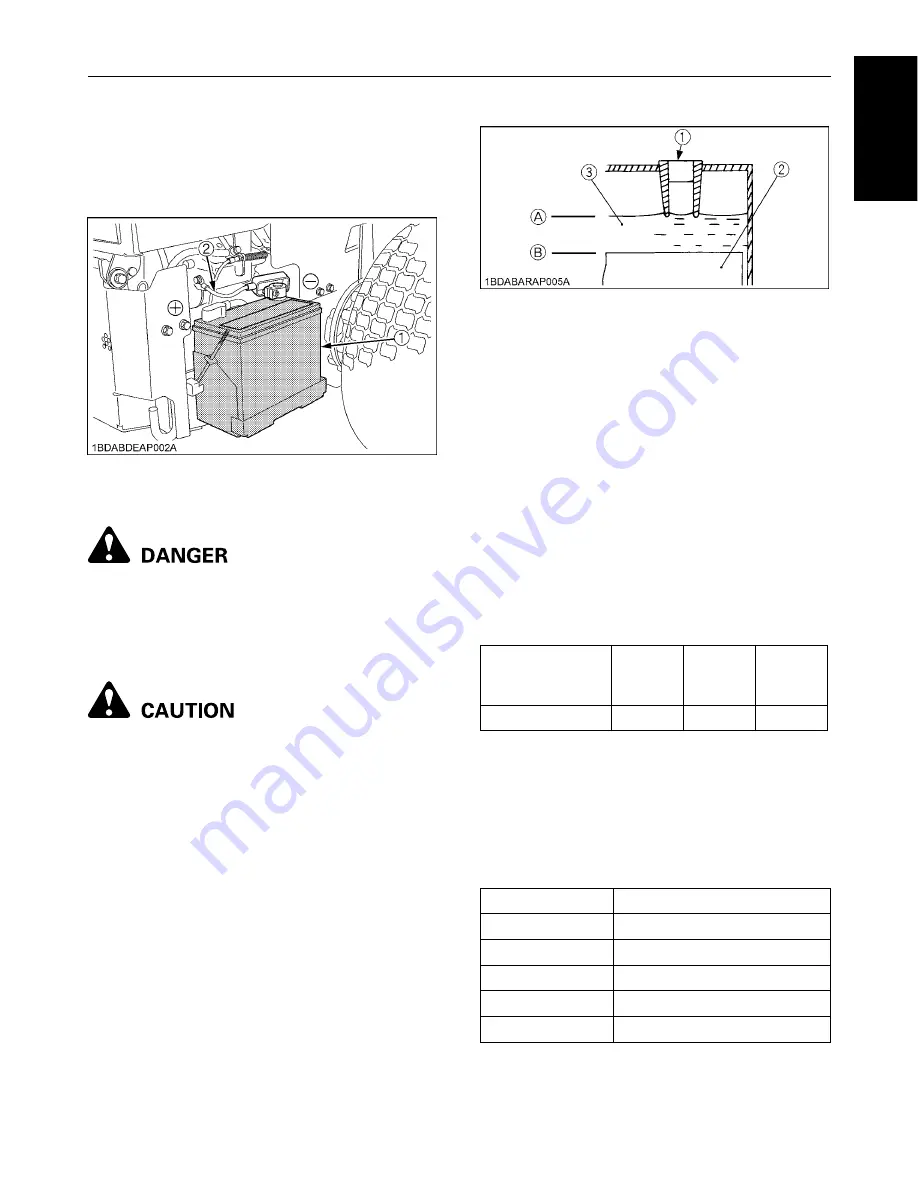
53
PERIODIC SERVICE
ENGLISH
The original battery is a maintenance-free, non-
accessible type battery.
If the battery is weak, the engine will be difficult to start
and the lights will become dim. It is important to check the
battery periodically.
C
Battery Charging
To avoid serious injury or death:
A
When the battery is being activated, hydrogen
and oxygen gases in the battery are extremely
explosive. Keep open sparks and flames away
from the battery at all times, especially when
charging the battery.
To avoid personal injury:
A
When charging battery, ensure that the vent
caps are securely in place (if equipped).
A
When disconnecting the cables from the
battery, start with the negative terminal first.
When connecting the cables to the battery,
start with the positive terminal first.
A
Never check battery charge by placing a metal
object across the posts.
Use a voltmeter or hydrometer.
(For accessible maintainable type batteries with
removable vent caps.)
1. Make sure each electrolyte level is at the bottom of
vent wells, if necessary add distilled water in a well-
ventilated area.
2. The water in the electrolyte evaporates during
recharging. Liquid shortage damages the battery.
Excessive liquid spills over and damages the machine
body.
3. To slow charge the battery, connect the battery
positive terminal to the charger positive terminal and
the negative to the negative, then recharge in the
standard fashion.
4. A boost charge is only for emergencies. It will partially
charge the battery at a higher rate and in a short time.
When using a boost-charged battery, it is necessary to
recharge the battery as soon as possible.
Failure to do this will shorten the battery's service life.
5. When the specific gravity of electrolyte reaches 1.27-
1.29 charge has completed.
6. When exchanging an old battery with new one, use a
battery of equal specification shown in.
(For non-accessible maintenance-free type batteries.)
Maintenance-free, non-accessible batteries are designed
to eliminate the need to add water. Yet the volume of
electrolyte above plates may eventually become depleted
due to abnormal conditions such as high heat or improper
regulator setting. Use a voltmeter to check the state of
charge. (See reference chart below to determine if
charging is necessary.)
(1) Battery
(2) Ground cable
(+): Positive terminal
(-): Negative terminal
(1) Vent well
(2) Separator
(3) Electrolyte
(A) "HIGHEST LEVEL"
(B) "LOWEST LEVEL"
Battery type
Volts
(V)
Reserve
capacity
(min)
Cold
cranking
Amps
51R
12
70
450
Battery voltage
Reference state of charge
12.6
100% (Full charge)
12.4
75%
12.2
50%
12.0
25%
11.8
0%
Содержание ZD221
Страница 1: ...OPERATOR S MANUAL READ AND SAVE THIS MANUAL MODEL ZD221 ENGLISH K3131 7121 3 ...
Страница 13: ...SAFE OPERATION 6 ENGLISH 7 DANGER WARNING AND CAUTION LABELS ...
Страница 14: ...7 SAFE OPERATION ENGLISH ...
Страница 15: ...SAFE OPERATION 8 ENGLISH ...
Страница 16: ...9 SAFE OPERATION ENGLISH ...
Страница 19: ...SERVICING OF MACHINE 2 ENGLISH 1 ROPS serial No ...

